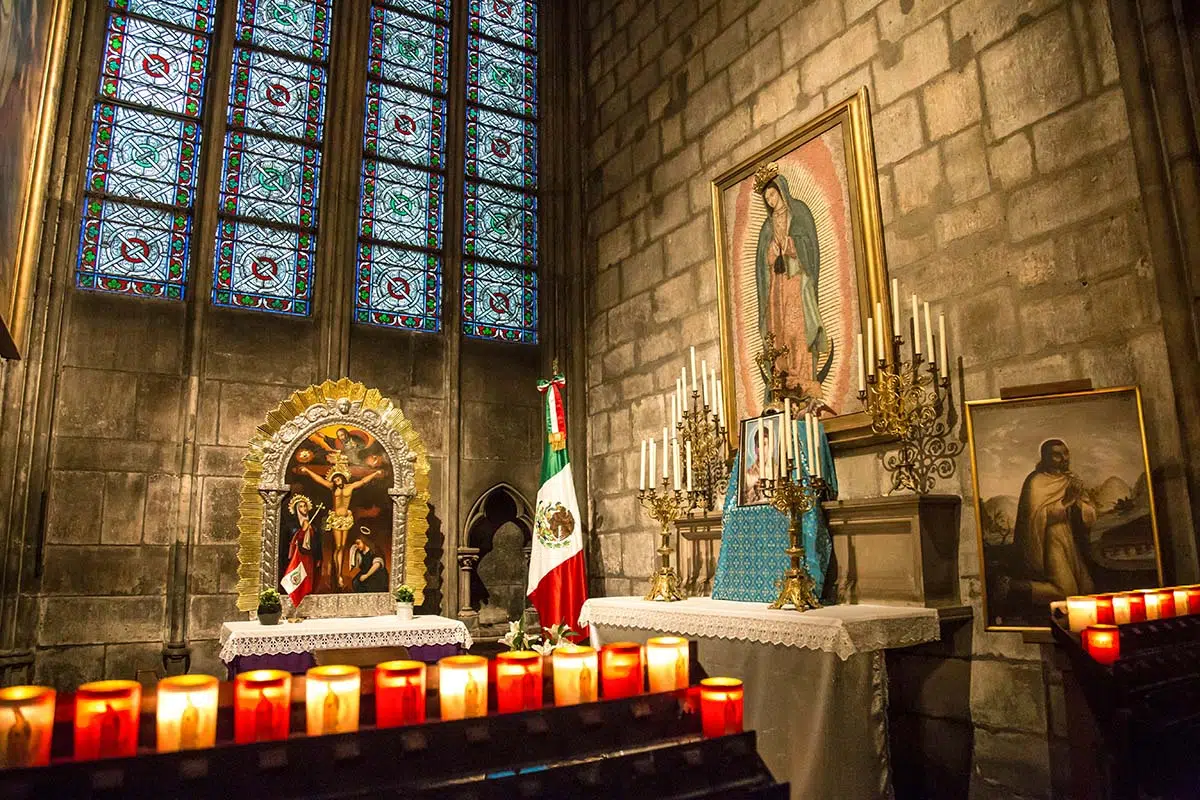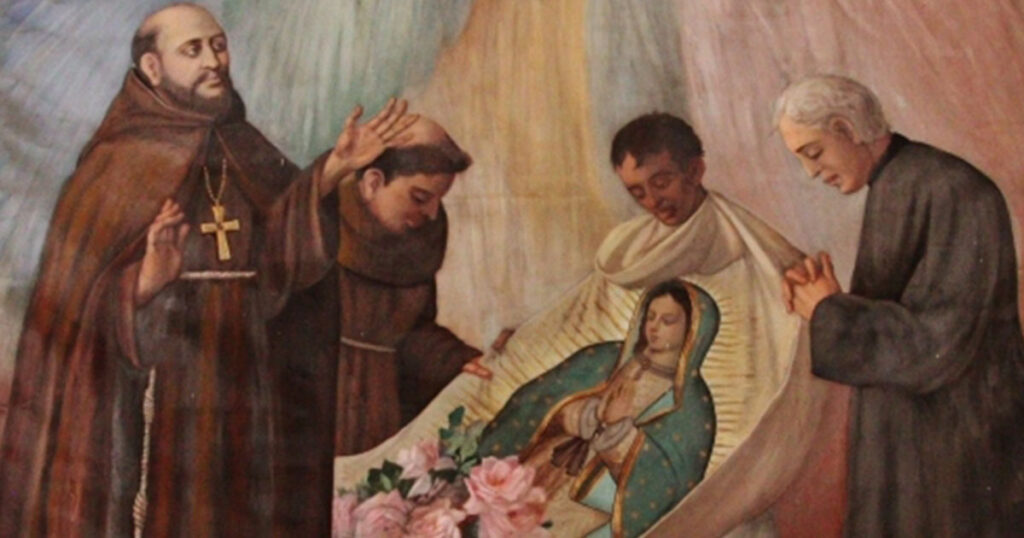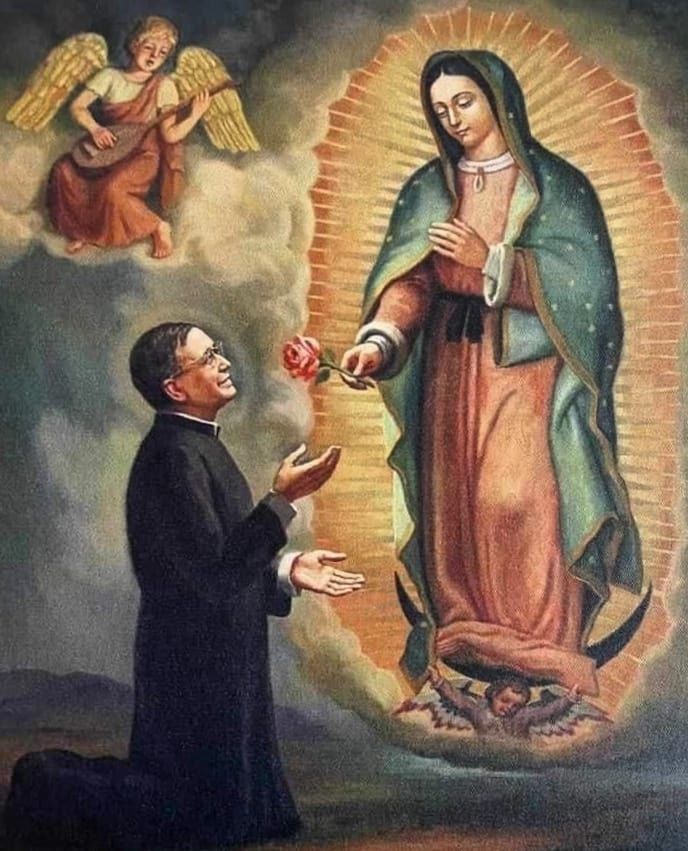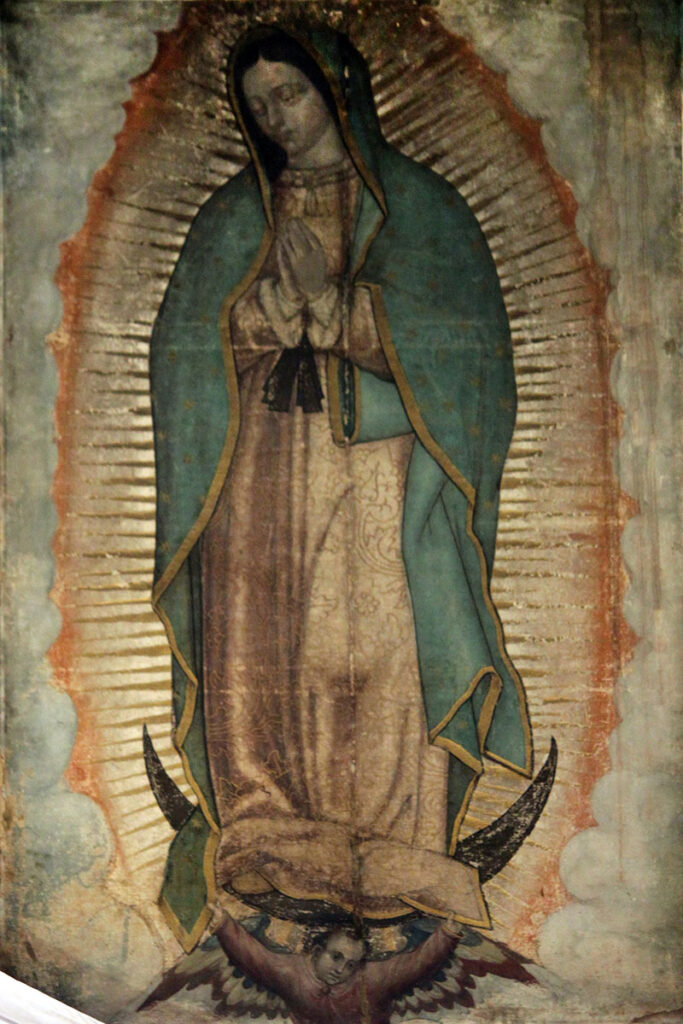
The Virgin of Guadalupe is one of the greatest treasures of our Catholic faith in Latin America. Her figure transcends time as a symbol of consolation, hope and cultural union. Her image, miraculously imprinted on the tilma of St. Juan Diego in 1531, holds mysteries that continue to fascinate the faithful and scientists alike.

But before we get to know the mysteries of the tilma of Juan Diego, we go back to the 20th century to recall that in May 1970, St. Josemaría Escrivá traveled to Mexico with a fervent desire: praying before the Virgin of Guadalupe in the old Basilica.
"I have come to see our Lady of Guadalupe, and by the way to see you," he announced to his children in his first greetings. St. Josemaría's deep devotion led him to spend hours in prayer before the "Little Virgin of Tepeyac," to whom he addressed words full of love:
"I offer you a future of love, with many souls..... Waves of souls, all over the world and at all times, determined to give themselves to your Son and to the service of others."
During his visit, he prayed for the Church, the Pope and Opus Dei with great and filial confidence. In a conversation with Cardinal Miguel Dario Miranda, he had even humorously expressed his desire: "when I am in front of her, they won't even take me out of the sanctuary with a crane".
Recalling the circumstances of that outburst of filial affection for Our Lady, Msgr. Javier Echevarría -who accompanied him on the trip, wrote twenty-five years later: "I would dare to assure him - I heard him say it on several occasions - that Our Lady forced him to undertake that penitential pilgrimage, because she wanted him to ask her intercession there, at the feet of that brown image, in favor of the world, of the Church, and of this small portion of the Church, which is Opus Dei.
Escrivá had a deep affection for the Guadalupana, reflected even in the details of his daily life. In his office in Rome always had a picture of her, witness to his countless prayers.
The impact of his devotion to Our Lady of Guadalupe was also reflected in the encounters he had with thousands of people during his stay in Mexico. In his catecheses, he transmitted his love for Our Lady and encouraged all her sons and daughters and the faithful to approach her with trust and generosity. This teaching continues to inspire members of Opus Dei and all those who seek to follow the path of holiness in daily life.
St. Josemaría did not promote an exclusive devotion to a particular Marian devotion, but he recognized in Our Lady of Guadalupe a special model of tenderness and divine closeness. He called it the Seat of Wisdom and our Hope.invoking her with confidence to ask for her intercession on behalf of all God's children.
St. Josemaría's relationship with our Lady of Guadalupe continues to be a source of inspiration. His filial trust and love for the Mother of God remind us that Mary is always ready to receive our petitions and to accompany us on our journey towards Christ.
Today, her example encourages us to pray with faith and to trust fully in Our Lady's maternal protection. ???????? But now let us enter into the mysteries of a miraculous tilma.
To understand the magnitude of the miracle of Guadalupe, it is important to know what a tilma is. It is a a mantle used by Mesoamerican Indians, made of maguey fiber.. This material, although resistant for daily work, has a limited useful life, generally not exceeding 20 years.
The tilmas were simple garments, used as a coat or to carry food. It is in this context that the story of the Virgin of Guadalupe begins, for it was in the tilma of a humble Indian, Juan Diego, that an image that defies all human explanation was captured.

In December 1531, just 10 years after the conquest of Mexico, an indigenous convert to Christianity named Juan Diego was on his way to Tepeyac to attend the Mass. On that hill, the Virgin Mary appeared to him for the first time, asking him to go to Bishop Zumárraga and request the construction of a temple in that place.
As expected, the bishop asked for proof of the apparitions. In response, in her last apparition, on December 12, at the top of the hill, where only plants especially resistant to inclement weather grew, the Virgin asked Juan Diego to pick the roses in bloom that she found there, in the middle of winter.
Juan Diego obeyed and, when he unfolded his tilma in front of the bishop, not only did the flowers fall, but an image of the Virgin Mary appeared drawn on the maguey fabric. This miracle marked the beginning of the Guadalupana devotion.
The tilma of Juan Diego is not only a miraculous canvas; it is an enigma that has been the subject of numerous scientific studies. These are some of the mysteries that surround it:
1. Inexplicable durabilityDespite being made of maguey fiber, which should have disintegrated centuries ago, the tilma remains intact after almost 500 years. This defies natural laws and has been considered a miracle by the faithful, and an inexplicable fact by the scientific community that has studied the canvas.
2. The unknown origin of colorsThe pigments in the image do not correspond to any known pictorial technique. Scientists have confirmed that they are not of vegetable, animal or mineral origin, and no brush strokes are found.
3. Eye reflectionsThe Virgin's eyes, when enlarged, show tiny reflections that correspond to human figures, including Juan Diego and Bishop Zumárraga.
This detail, discovered with modern technology, is astonishing for its precision in the small space of the corneas. Through the process of digitizing computer images, the reflection of thirteen people in the eyes of the Virgin Mary was discovered according to the Purkinje-Samson laws.
The very small diameter of the corneas (7 and 8 mm) rules out the possibility of painting the figures on their eyes, especially considering the crude material on which the image is printed.
4. Stars on the mantleThe Virgin's mantle shows a star pattern that coincides with the constellations visible in the Mexican sky on December 12, 1531, the day of the last apparition.
5. Constant temperatureThe tilma maintains a constant temperature of 36.6º Celsius, similar to that of a living human body.
6. Resistance to damageIn 1921, an attack with dynamite near the tilma destroyed the altar, but the image remained completely intact and undamaged.
7. Cultural symbolismThe Virgin combines indigenous and Christian elements. For example, her dress has floral patterns representing mountains sacred to the Mexica, and her posture indicates humility and prayer, common in Catholic iconography. The features of her face are indigenous and she spoke to Juan Diego in her native dialect.

Today, this miraculous tilma is in the Basilica of Guadalupe in Mexico City, exposed for millions of pilgrims who come to contemplate it every year, especially during its feast day on December 12.
In his homily of December 12, 1981, St. John Paul II emphasized the importance of the Virgin of Guadalupe in the cultural and religious identity of Mexico and Latin America, referring to her as a symbol of unity and evangelization, and also as fertile ground for the priestly vocations.
Our Lady of Guadalupe, as patroness of the Americas, continues to encourage young people to respond courageously to her call, offering them her maternal protection and constant intercession. St. Juan Diego, canonized in 2002 and chosen as the messenger of this miracle, is an example of humility and service. His simple life reminds us that God works wonders through willing hearts.
As St. Josemaría teaches us, "To Jesus one always goes and returns through Mary". The Virgin Mary intercedes for each one of us.. His love and guidance strengthen priests in their mission to evangelize and serve.
Mary always guides her children to Jesus, and especially those whom He calls to the priesthood. Her message of love and service, which transformed history in 1531, continues to be a source of strength for those who discern their vocation. Our Lady invites these young people to be a bridge between God and His people, just as St. Juan Diego was.

Every December 12, her feast day, millions of pilgrims flock to the Basilica of Guadalupe, considered one of the most visited shrines in the world. But beyond numbers, devotion to the Virgin of Guadalupe is a testimony to God's love. Her image was not only a gift to the newly evangelized indigenous people, but also a universal call to faith and reconciliation.
And we end with one of St. Josemaría's petitions on the last day of his novena: "Lady, I surrender myself, I surrender myself totally: I no longer ask! I love the Will of your Son! We abandon ourselves, we rest, we love and accept his designs, fully accepting God's Will.
We know, our Mother, that you will give us the means to carry forward this path of charity and love, and to spread it throughout the world (...)".